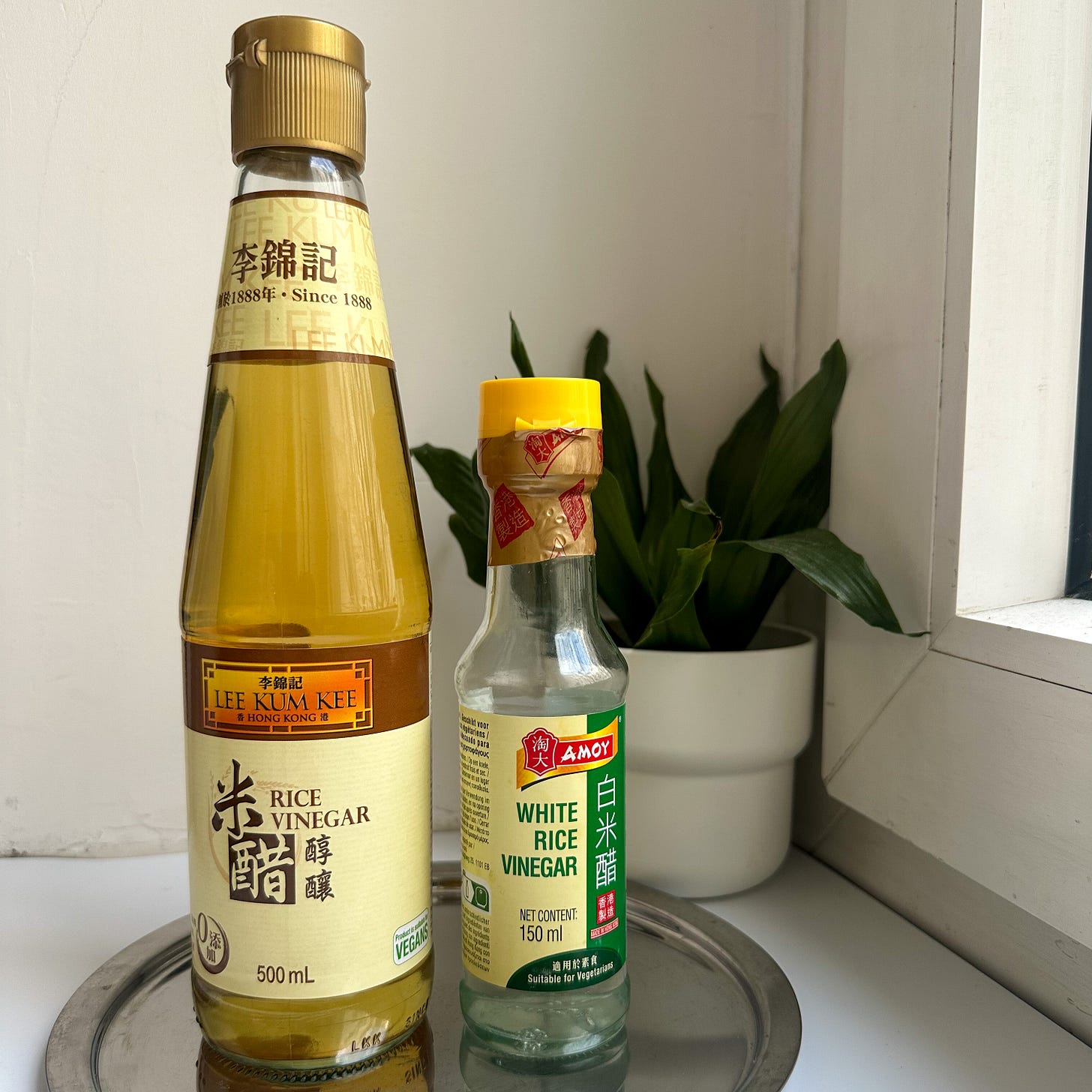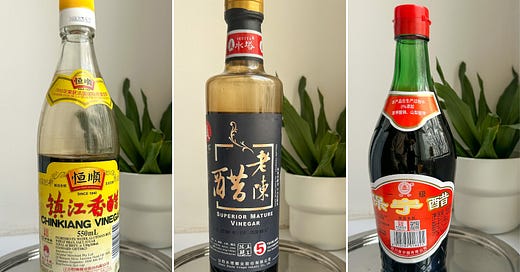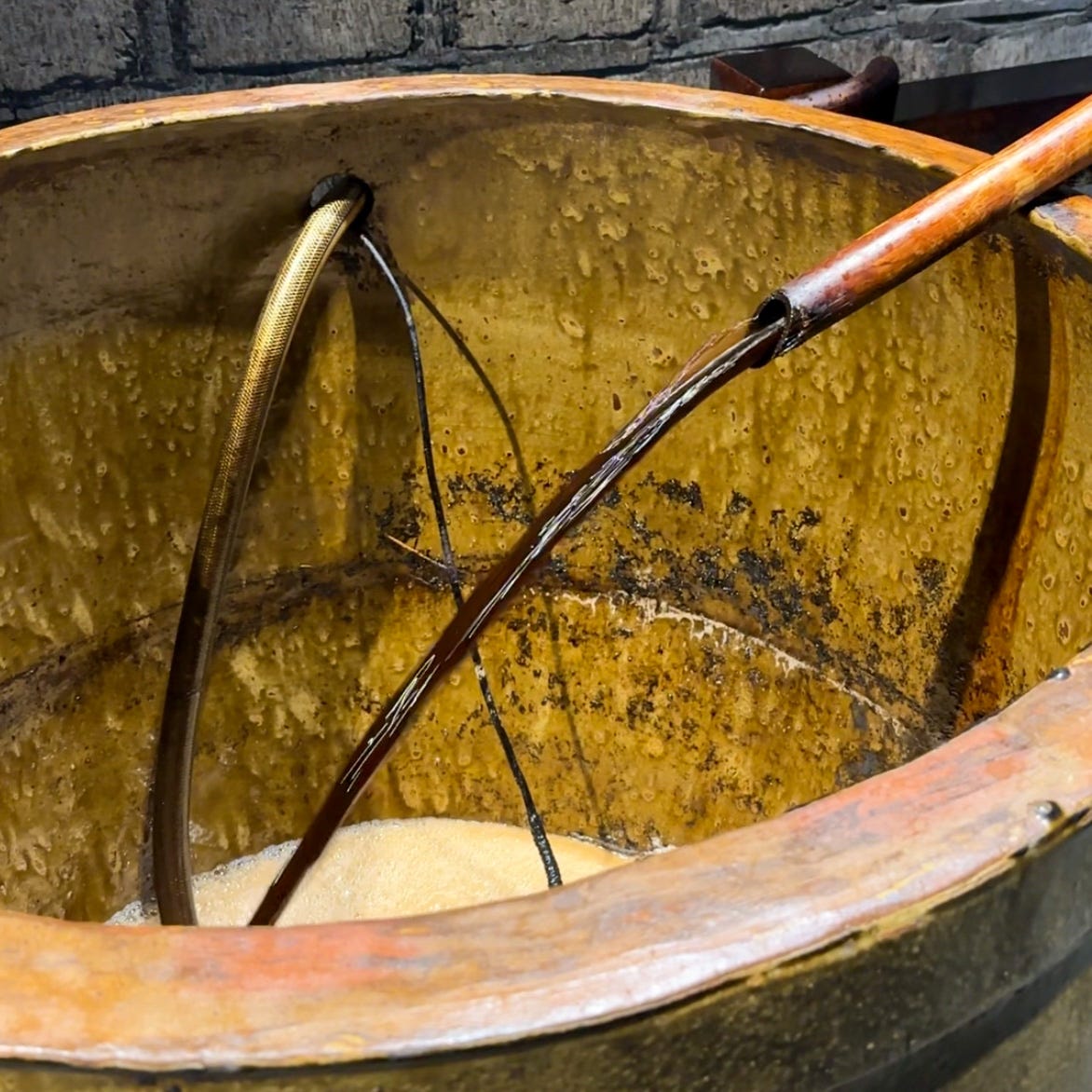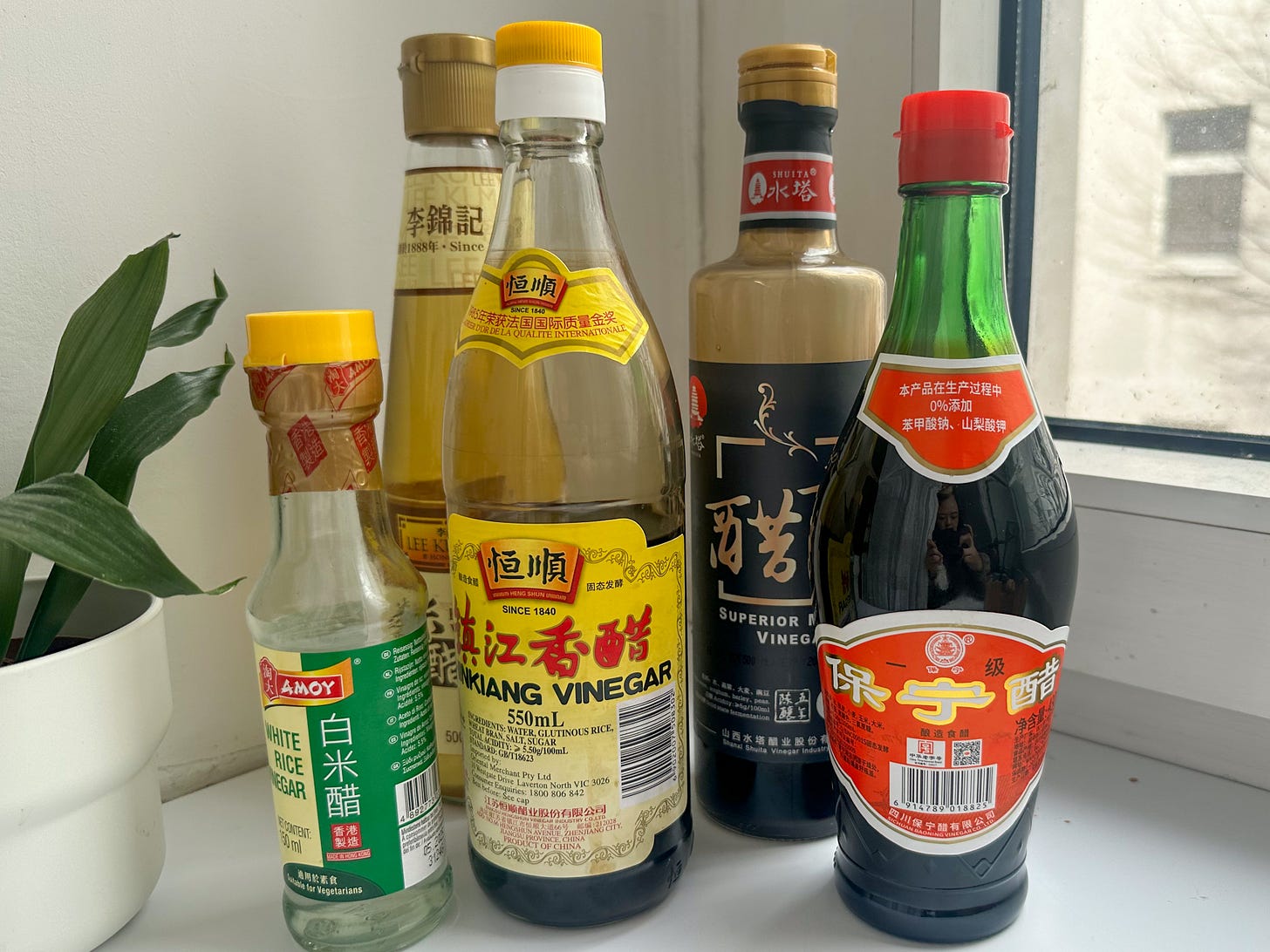Welcome to Episode 2 of Chinese Pantry Talk: Chinese Black Vinegars. If you’re new here, check out the first episode on Doubanjiang. If you want a digestible short video, watch here!
I was born in a small town in northeastern Sichuan and lived there until school age. It is probably the least interesting town food-wise; our small family of eaters always complained. However, about 30 km south, you’d arrive at Langzhong (阆中), the heart where vinegar is pumped to the whole Sichuan. Here, a local black vinegar specialty called Baoning Vinegar is produced and has become the household choice of the region. We’ve visited this ancient tourist town countless times for its three specialties: spice-braised beef, white steamed buns, and vinegar. Occasionally, we had them all together in a starchy hot-and-sour-ish soup, with beef and bread cubes. During my recent trip to this familiar old town, I visited the museum of Baoning Vinegar, and for the first time, I got a closer observation of how this ingredient is made.
Chinese vinegar comes in various types, including black, white, and other seasoned varieties. In everyday cooking, black vinegar is the most commonly used type. It's indispensable for dishes like sweet and sour tang cu pork ribs and kung pao chicken, and just a few drops can enhance the flavor of noodles and dumplings.
Vinegar in China is primarily made from fermented grains such as glutinous rice, sorghum, or bran. Different regions use local ingredients and traditional methods to create specialty vinegars. For instance, glutinous rice is more commonly used in southern China, while sorghum and wheat bran are more prevalent in the north. Vinegar production in China has a history of over a thousand years and is believed to have originated as a byproduct of wine brewing. The book Qimin Yaoshu from the 6th century documented 23 different methods of brewing vinegar, 10 of which involved grains.
What is Chinese black vinegar?
Black vinegar, also known as dark vinegar, has a deep brown color and a full-bodied, mildly acidic, smoky, and malty taste, accompanied by an intense fragrant smell and sometimes a sweet aftertaste. Most black vinegars are made through a solid-state fermentation 1process and are aged for a few months to up to 20 years. The longer the aging process, the higher the price and the deeper the flavor becomes.
Here are three common types of black vinegar, which are part of the four famous vinegars of China2. They can be used interchangeably.
Chinkiang vinegar (Zhenjiang Xiangcu, 镇江香醋): Fragrant and subtly sweet, this vinegar is mainly made from glutinous rice and produced in Zhenjiang in southeastern China. It is almost synonymous with Chinese vinegar and is the most accessible and versatile variety. Chinkiang vinegar works great in a variety of dishes, especially cold dishes, or as a dipping sauce for dim sum and xiaolongbao. A recommended brand is Hengshun (恒顺).
Shanxi mature vinegar (Shanxi Chencu, 山西陈醋): This vinegar is sharp and smoky, mainly made from sorghum and produced in Northern Shanxi province. It is aged for a longer period, up to 20 years, and is great for longer braising to maintain its tanginess and cut through the fat. Many Northern Chinese people use this vinegar for dumpling dipping sauce and to dress hand-pulled noodles. Look for vinegars produced in Shanxi province and aged over 3 years. My bottle is from brand Shuita (水塔), aged 5 years.
Baoning vinegar (Baoning Cu, 保宁醋): Herby and lighter in sourness, this vinegar is mainly made from bran and Chinese medicine ingredients. Its production process is similar to the Shanxi variety, and it is the best vinegar to use in Sichuan dishes and noodles like suan la fen (spicy and sour sweet potato noodles). This one is a bit slightly hard to find but I finally found it here (US you can find a premium version here)
How to pick black vinegar?
When choosing black vinegar, look for products with a short list of ingredients (grains) and an acidity level over 5g/100ml. Some good signs to watch for on the label are solid-state fermentation and geographic indication.
Most black vinegars found in Asian grocery stores, priced around 3 euros, are mass-market products aged for months to a year, which are suitable for everyday cooking. However, there are also premium or handcrafted varieties aged over 3 years available for those seeking higher quality.
White and Other Vinegar
White vinegar, also known as rice vinegar, is commonly used in various Asian cuisines. It is mostly made from rice and has a pale yellow color or is colorless. It can be made through solid-state or liquid fermentation (similar to balsamic)3. This type of vinegar is best used for maintaining the color of ingredients such as stir-fried cabbage and potato sticks. While white vinegar can substitute for black vinegar in some recipes, it lacks the depth and umami flavor.

There are also seasoned vinegars available, such as vinegar specifically for dumplings and red vinegar for dipping and pickling. Japanese and Korean rice vinegar can be used for Chinese cooking as well, but it's important to be mindful of whether they're seasoned with sugar or other ingredients.
How to use black vinegar
Vinegar can be used both raw and cooked in Chinese cooking. It balances and enhances sweet and spicy flavors. Even in dishes that don’t primarily taste sour, a splash of vinegar is often added at the end to round up the flavors. When using vinegar in stir-fries and braised dishes, add it only later in the cooking since vinegar loses its flavor when heated.
When enjoying hot pot in Sichuan, many people, including myself, like to add black vinegar to the dipping sauce with sesame oil and grated garlic, to balance out the spiciness and oiliness. My late grandpa used to make (or maybe invent) a vinegar soup called "glass soup" for my mom when she was a kid. It was simply boiled water with a few drops of vinegar, MSG, and scallions. This became a staple in my childhood as an easy soup to accompany any meal.
Here are some recipes where you can use Chinese black vinegar, there will be more to come in the next weeks:
In stir-fries like kung pao chicken
In dressings like smashed cucumber salad
In dipping sauces for zucchini pancake and dumplings
In noodles like Sichuan jelly noodles (liangfen), or scissor-cut noodles
(*Product links are not affiliated, I don’t get any commission if you buy through the link)
The last famous vinegar is Yongchun old vinegar (永春老醋) from southern Fujian province, which I couldn’t get hold of it here in Germany so I skipped it.
In Chinese, there’s a difference between white vinegar (bai cu 白醋, made from white rice) and rice vinegar (mi cu 米醋, made from glutinous rice). but in Asian grocery stores here, there seem to be no clear distinction.








Cool deep dive, love this! Thank you for sharing your knowledge! :)
Thank u for the Needed Info. There Much I need to learn( an under statement ) in Chinese Cooking
(Plus other Asian Cuisine) in the use of Vinegars,; sauces, paste's.
As the Novice cook who acts like I know I'm looking for in an Asian Food Market, this is quite helpful, thank u. AC , NJ